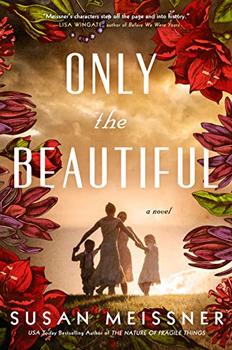1.jpg) In Patti Callahan Henry's The Secret Book of Flora Lea, Hazel Linden, 14, and her sister Flora, 5, are evacuated to Oxfordshire during Operation Pied Piper in World War II. To help Flora through the trauma of war and evacuation, Hazel creates a secret magical woodland world called Whisperwood and the River of Stars, to which she and Flora can escape through hidden doorways in the real world and have adventures. However, the creation of Whisperwood and the telling of stories becomes a terrible burden to Hazel, as she blames it for the tragedy that lies at the heart of the novel. In her grief and guilt, she stops telling stories and abandons her dream of being a writer. Only when she receives a book written by an American author about Whisperwood twenty years later does she set off on a journey of discovery to uncover the truth about the past and come to terms with it.
In Patti Callahan Henry's The Secret Book of Flora Lea, Hazel Linden, 14, and her sister Flora, 5, are evacuated to Oxfordshire during Operation Pied Piper in World War II. To help Flora through the trauma of war and evacuation, Hazel creates a secret magical woodland world called Whisperwood and the River of Stars, to which she and Flora can escape through hidden doorways in the real world and have adventures. However, the creation of Whisperwood and the telling of stories becomes a terrible burden to Hazel, as she blames it for the tragedy that lies at the heart of the novel. In her grief and guilt, she stops telling stories and abandons her dream of being a writer. Only when she receives a book written by an American author about Whisperwood twenty years later does she set off on a journey of discovery to uncover the truth about the past and come to terms with it.
Just as the teenage Hazel instinctively understands that creating an imaginary world will help her and her sister ...

 Book Reviewed by:
Book Reviewed by:






